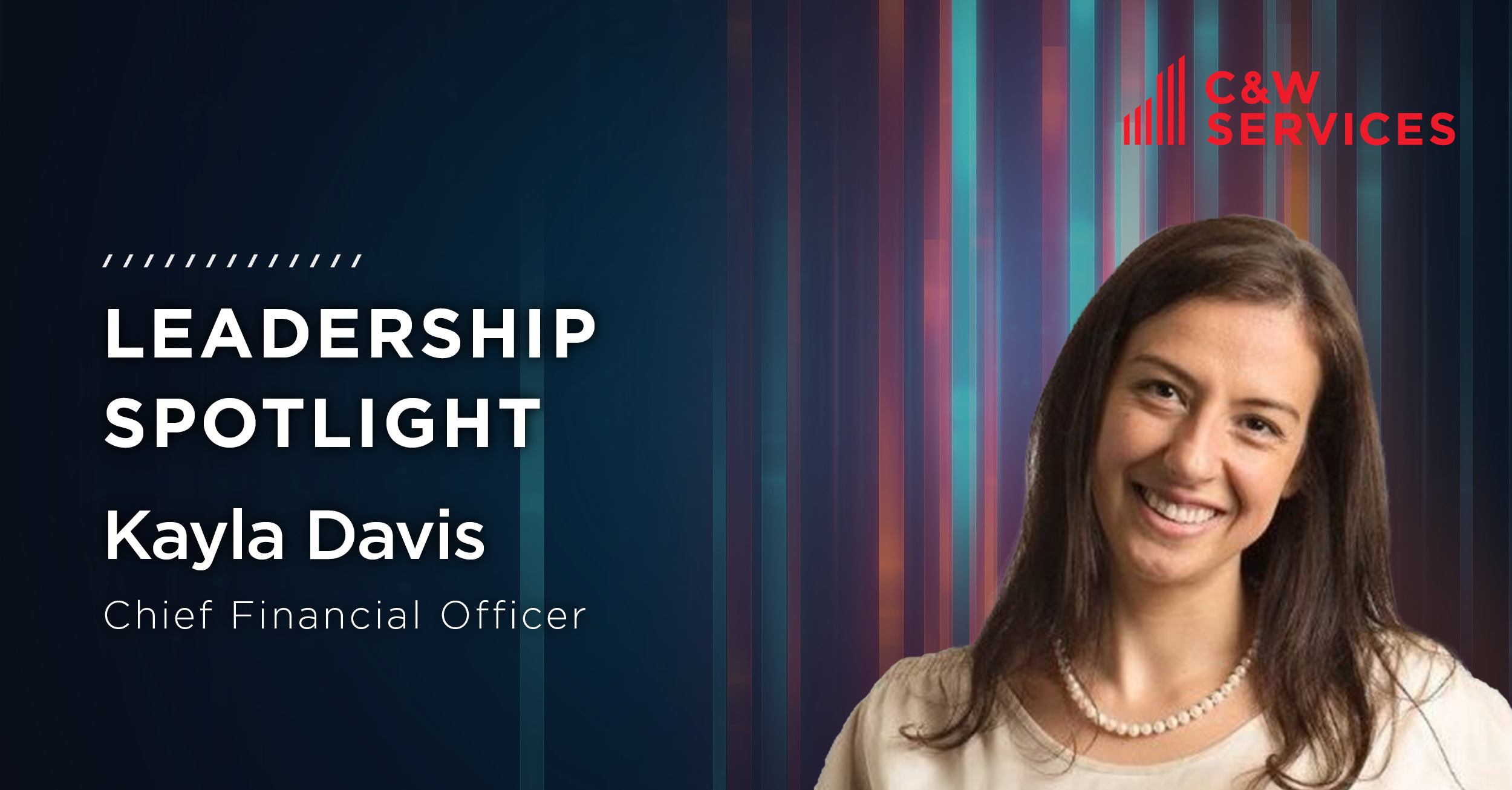
Kayla Davis, Chief Financial Officer
Risk isn’t just something to be managed—it’s at the heart of every business’s critical decision. From navigating market shifts to embracing new technologies, how organizations handle risk can mean the difference between thriving and merely surviving. For Kayla Davis, Chief Financial Officer (CFO) of C&W Services, risk management isn’t about playing defense. It’s about positioning a company for long-term success by embracing change, building resilience, and making informed decisions in uncertain environments.
At a recent Association for Financial Professionals (AFP) Member Meet-Up, Kayla joined industry leaders to discuss modern risk management. The event focused on how behavioral biases, cultural considerations, and collaboration across functions influence decision-making at the highest levels. While risk is often viewed as something to avoid, Kayla sees it as an opportunity that must be actively managed, not ignored. “Risk is at the core of every critical decision we make,” she said.
The Risk of Doing Nothing: Why Inaction Can Be the Biggest Threat
Leaders often view risk in terms of action—launching a new initiative, entering a new market, or adopting a different strategy. But risk isn’t only about what we do—it’s also about what we don’t do. Many organizations hesitate to change, preferring to maintain the status quo. “That’s how we’re wired,” Kayla said. This tendency, known as status quo bias, can be a silent threat. While stability has advantages, inaction can be just as risky, especially in competitive industries where innovation moves quickly.
Kayla—who partners closely with CEO Mia Mends to drive growth, profitability, and sustainability—emphasized that failing to act can have long-term consequences. Businesses that resist change while competitors embrace it risk falling behind. Reluctance to take calculated risks can lead to missed opportunities, stagnation, and vulnerability to external disruptions. Recognizing when an organization’s fear of change is holding it back is just as important as understanding when a bold move is necessary.
A Culture of Resilience and Trust: Beyond Financial Models
Risk management isn’t just about financial models and mitigation strategies—it’s deeply tied to a company’s culture. Resilience is a core principle at C&W Services that Kayla believes must be reinforced. “Resiliency is like building a muscle,” Kayla explained. “The more you train your organization to adapt and respond to change, the stronger it becomes at navigating the unexpected.”
While external factors may be beyond an organization’s control, Kayla emphasizes focusing on what can be built and influenced internally. This pragmatic approach to resilience means organizations recover from disruptions and move forward, using challenges as learning opportunities. However, resilience isn’t created overnight. It requires a culture where team members feel empowered to raise concerns, anticipate risks, and take proactive steps to address them.
Trust is a vital factor in fostering resilience. Businesses can react swiftly and effectively when teams feel safe speaking up about risks early rather than waiting until a crisis unfolds. Kayla understands that resilient organizations are agile, adaptable, and prepared for the unexpected.
The Power of Collaboration: A Team Effort
While CFOs play a critical role in guiding risk management, Kayla made it clear that no single leader can foresee every risk an organization might face. Effective risk management requires collaboration across functions, from finance to operations to strategy. For example, treasury and Financial Planning & Analysis (FP&A) teams bring unique perspectives. Treasury experts focus on the balance sheet, while FP&A teams provide a broader view of the organization’s performance and strategy. These teams help create a comprehensive approach to financial risks and opportunities.
By breaking down silos and encouraging cross-functional teamwork, businesses can ensure that no critical risks are overlooked. The best risk management strategies aren’t developed in isolation but across multiple disciplines. “One person alone,” Kayla said, “cannot possibly foresee all the risks that the organization could have.”
The Future of Risk Management: A Strategic Advantage
This collaborative foundation better equips organizations to face an ever-evolving risk landscape. Risk constantly evolves, shaped by external forces such as market shifts, technological advancements, and global events. As a forward-thinking leader, Kayla Davis views risk management as a strategic advantage. Kayla and her team drive growth, profitability, and sustainability with a dynamic approach, ensuring long-term success in an unpredictable world.
For more insights from Kayla Davis on risk management and decision-making, read the full AFP article: How Behavioral Biases and Culture Impact Risk Management.




